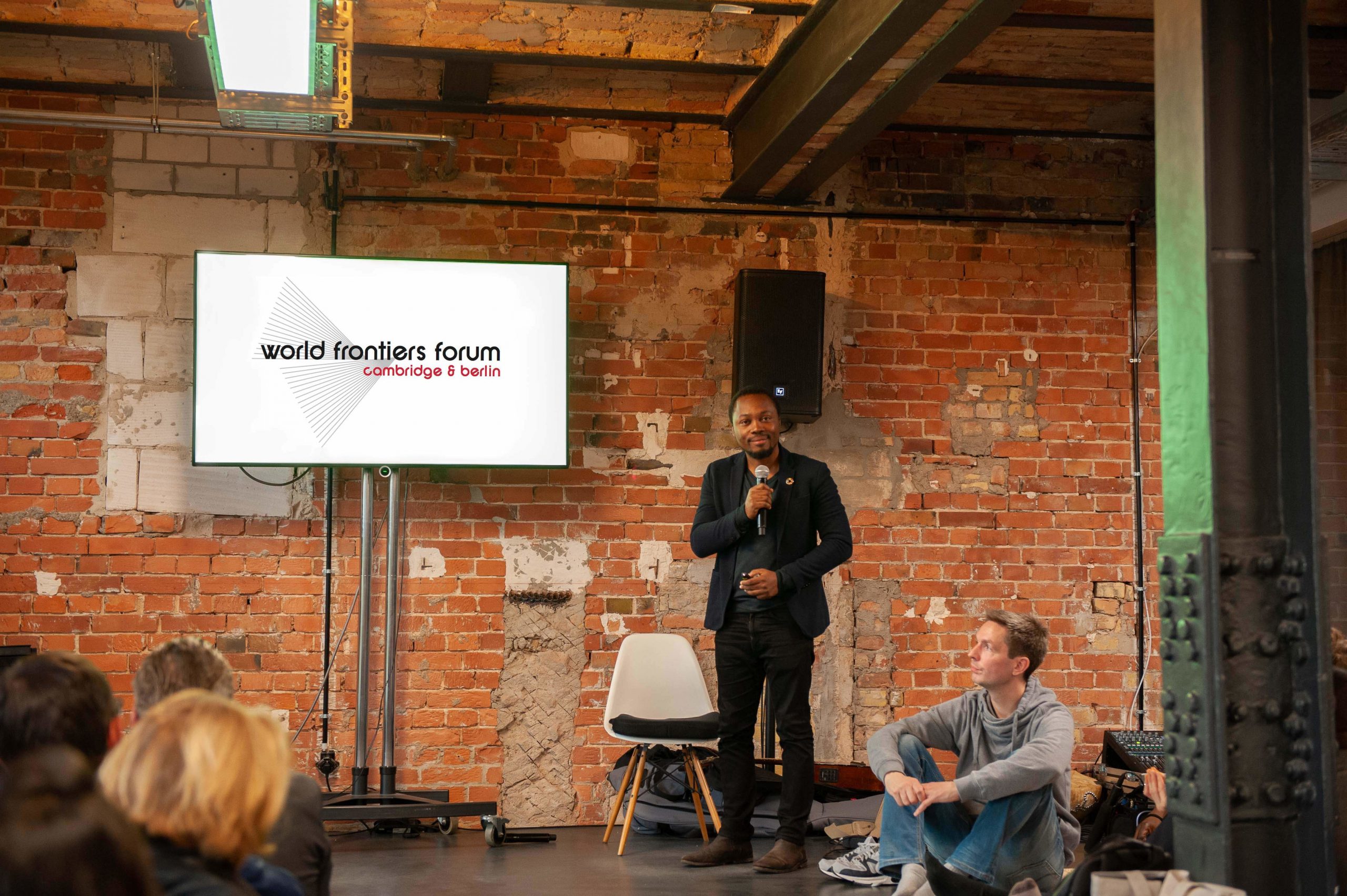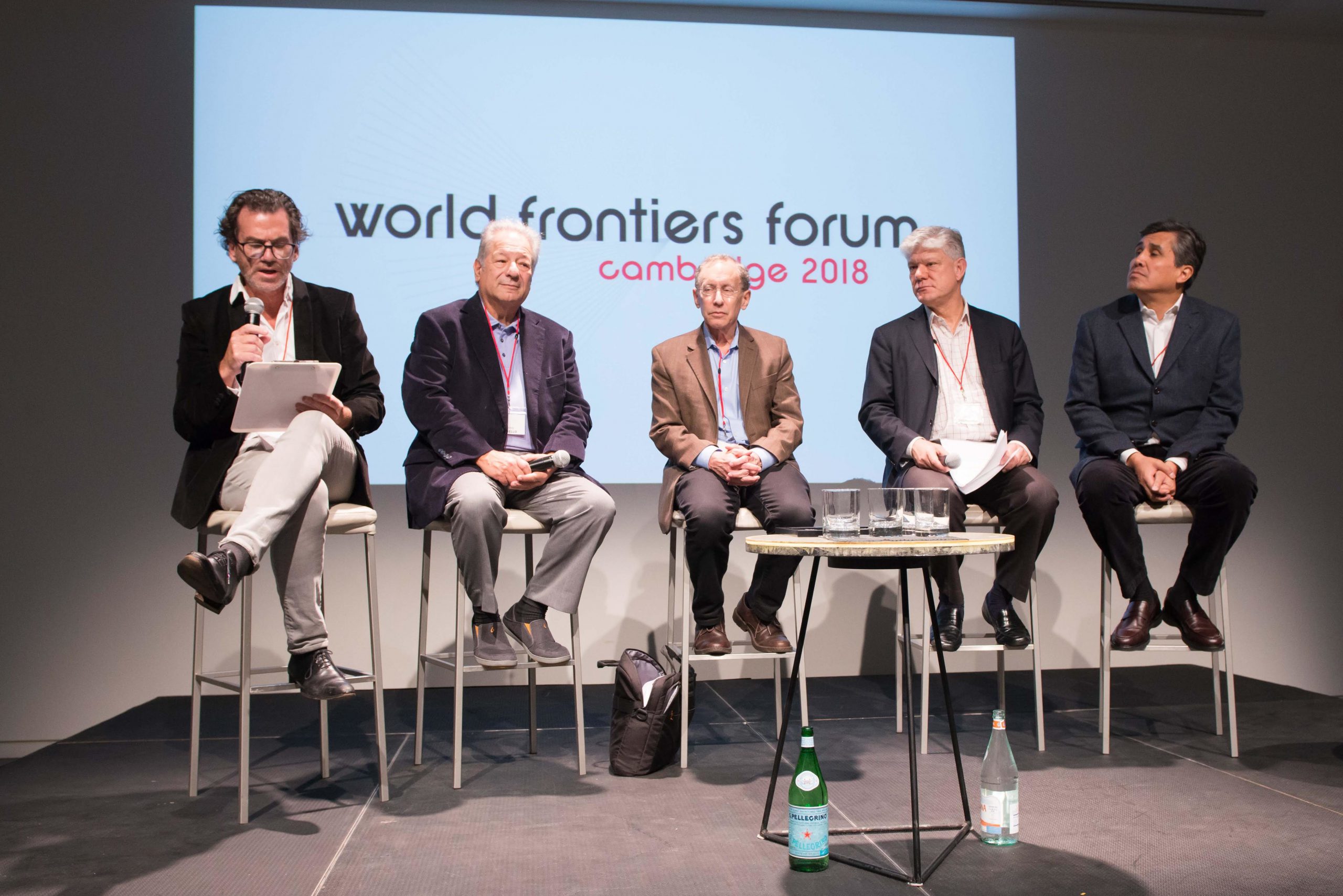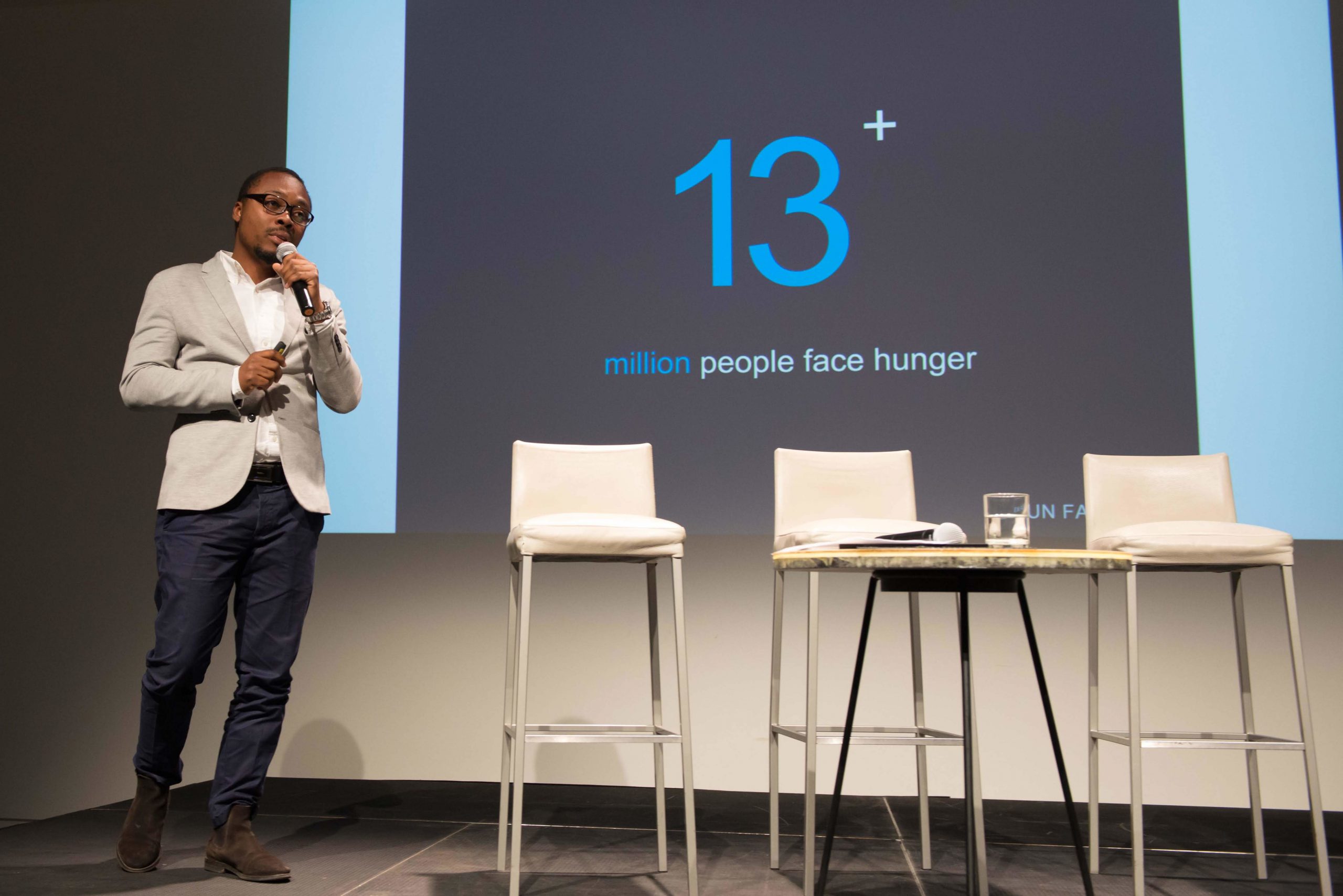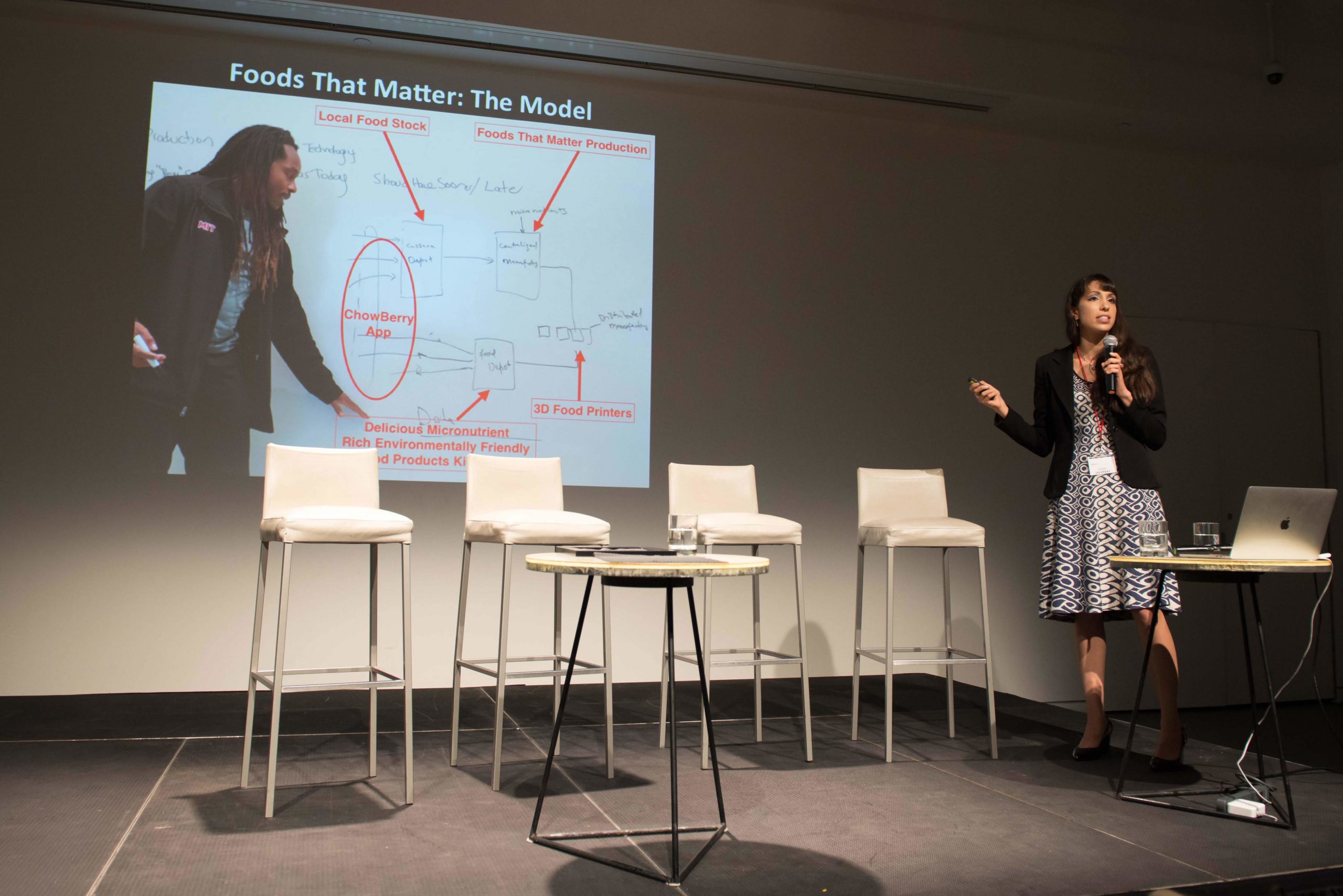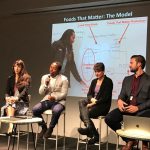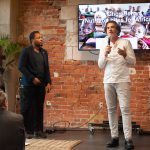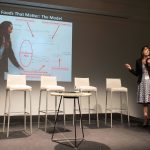The United Nations recently passed a resolution that encouraging the adoption of pioneering discoveries and exponential technologies that improve the human condition and wellbeing into the lives of millions in the developing world to accelerate achievement of the SDGs.
Consequently the Convergence Project (CP) powered by World Frontiers Forum – a consortium of leading scientists Prof. Robert Langer (MIT), David Edward (Harvard), Dennis Ausiello (MGH) is a response to this resolution and seeks to leverage breakthrough scientific discoveries in improving wellbeing working with young pioneers from around the world.
The 2018 Convergence project originating from discoveries out of Harvard University and MIT and called “The Chowberries” started out with an approach to take pioneering discovery of low PH sensitive micro-nutrient encapsulation technology from Langer Labs at MIT and an algae based moisture retaining edible packaging technology by Harvard Professor David Edwards and leveraging both pioneering discoveries to create an African Super Food or Nutrition bite to address micro-nutrient deficiency such as Iron Deficient Anemia in developing countries beginning in Africa.
2018 – 2019
The project design of the Chowberries project centered on the development of a nutrition bites called “Chowberries” which leverages two pioneering discoveries from MIT and Harvard University
(a) Heat stable low-pH sensitive micro-nutrient encapsulation and delivery form with low-degradation and high absorption rates in GI tract developed by MIT Professor Robert Langer and
(b) Algae based edible packaging of micro-nutrient rich food forms developed by Harvard Professor David Edwards.
“Chowberries” aims to improve micro-nutrient access and nutrition for 10 million persons in the developing world by combining the production of micro-nutrient rich foods integrated with heat stable low-PH sensitive micro-nutrient delivery forms and novel edible packaging technologies made from algae by local farming co-operatives with local distribution and large scale commercial sale.
This phase of the project was supported by Global Good (Intellectual Ventures) giving guidance on a clinical study approach to kickstart the project.
Clinical Study: Iron-Fortified Snack for High Absorption & Low Gastrointestinal Side Effects
The Clinical study was divided into two focus areas a). research to gather scientific data backing our proposed intervention via a human study that investigates bio-availability of Iron and a second longitudinal study assessing efficacy.
We aim to reduce iron-deficient anemia for those unable to access clinical treatment by a unique iron-fortification strategy based on new food technologies that have recently been scaled to mass-distribution levels. We hypothesize that iron-deficient anemia in low-income underserved communities can be reduced with minimal (acceptable) side effects by delicious, low-cost, locally-produced food snacks, called ChowBerries. We propose to assess these novel iron-fortified food forms clinically starting in an absorption study in Zurich followed by field efficacy and safety studies in school children in Africa. The purpose of these trials will be to: a) validate the ability of ChowBerries to improve iron absorption while minimizing gastrointestinal side effects as a function of iron absorption; b) test and validate new anemia screening tools that can be easily administered in the field while showing efficacy at least as effective as current clinical diagnostics; and c) validate an in-school distribution and screening model that can allow mass distribution of the iron-fortified food snacks in African school systems that provide an acceptable level of distribution and screening oversight. We believe it possible to conduct these studies and, if successful, begin product distribution within a period of 5 years from the start of our program.
The Chowberries
ChowBerries are fruit, vegetable and cassava root finger food forms surrounded by a grape-like skin comprised of a bilayer formed by alginate and chitosan polysaccharides. The skin of the food bites provides an effective barrier to water and oxygen transport, permitting high moisture content, which facilitates rapid dissolution in the mouth and distribution of active material. Of relatively low water content, the skin further permits the incorporation and stabilization of key enhancers of iron absorption such as vitamin C, which can lose stability in high water-content foods via oxidation. The skin also permits the stabilization of pre- and probiotics that can help counter gastrointestinal side effects of unabsorbed iron. ChowBerries may also incorporate unique Basic Methacrylate Copolymer (BMC) stabilized iron that has been demonstrated to preserve iron stability on the shelf and in high-stress conditions prior to eating as in boiling. BMC can also reduce unwanted sensory changes that occur during fortified food storage (the presence of fortified iron in certain foods can cause rancidity and subsequent off flavours), food preparation and cooking.
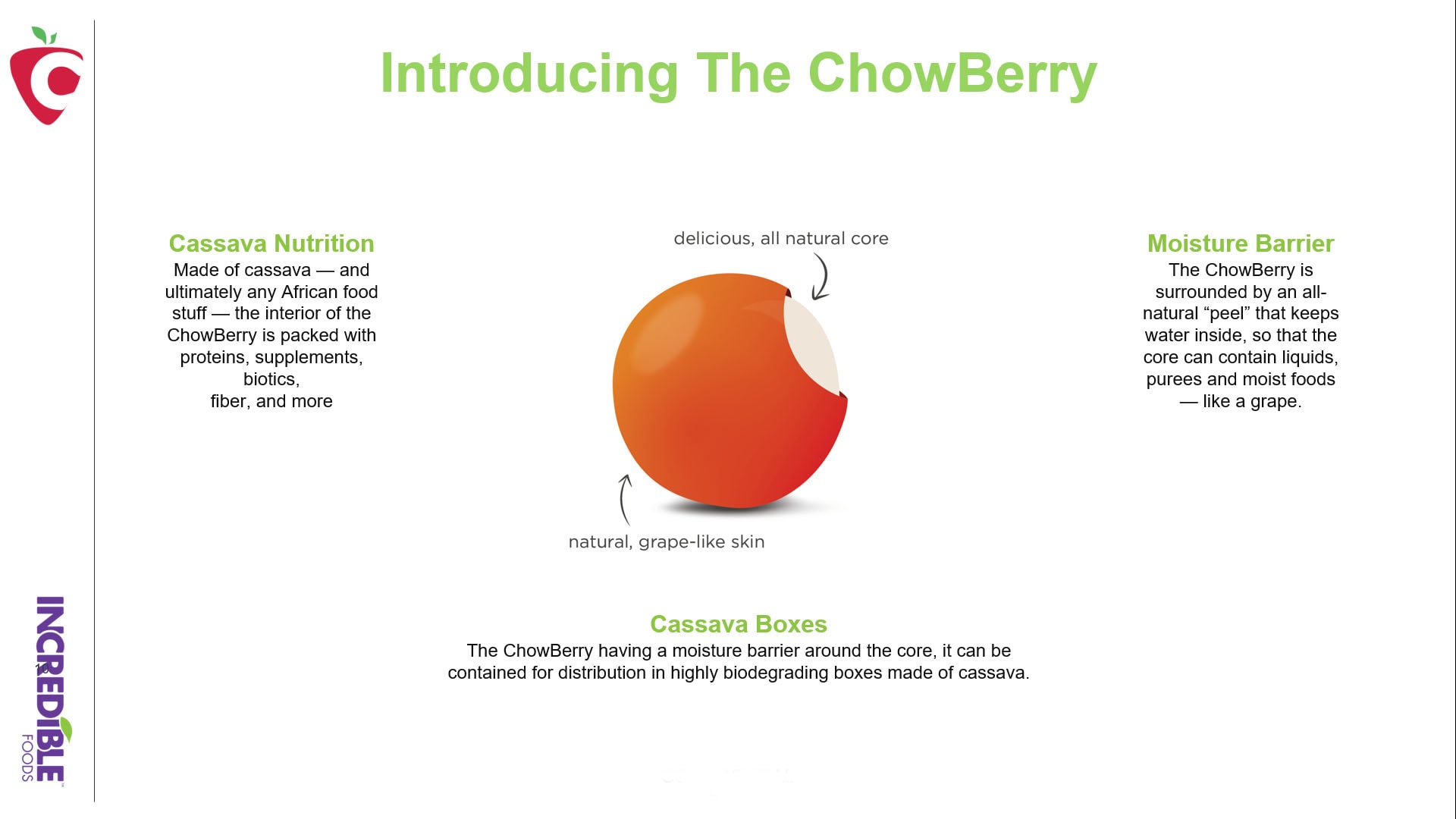
2019 – 2020 – Cambridge Crops (MIT)/Chowberry/Incredible Food (Harvard)
The Chowberries formed charitable partnership with Incredible Foods, a Boston-based startup food technology company to incorporate its groundbreaking edible packaging food technology into the Chowberries nutrition bites.
Consequently, the Chowberries will incorporate two revolutionary technologies borne at Harvard University (Incredible Foods) and MIT (Cambridge Crops) both charitably donated to the Chowberries project to create a versatile new food form that can thrive in the current food system without plastic packaging. Based on a food form ubiquitous in nature, the Chowberries wraps almost any food and drink in two natural layers, a first layer that is like the endoderm of a coconut, and the second that is like the coconut endocarp. Chowberries can be produced at a mass scale at affordable costs, are delicious, and as a generalized food vector validated with consumers in over 4 years of consumer trial.
Describing the Chowberries – How it Works
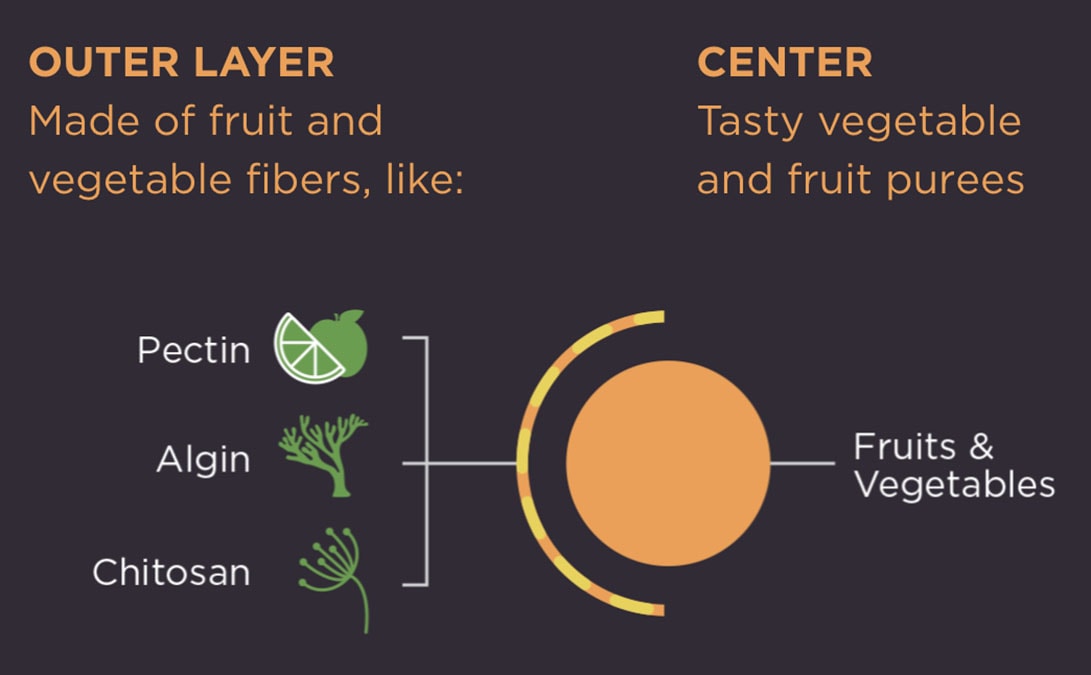
How does it work? Every bite is wrapped by a skin that is made of plant-based molecules that protect what’s inside just like the skin of a grape — a true water resistant barrier, which is nevertheless delicious. As with nature, the skin is also a great place to place nutrients, like vitamin C, with less hydration than in the core
The Chowberries project will be overseen in the first years by the World Frontiers Forum (a 501 (c) 3 nonprofit based in Massachusetts) working alongside our Nigerian-based office. Final product development and distribution in Africa will be actualized and led by Chowberry Foundation with the charitable support of our technology partners Incredible Foods, a for-profit Massachusetts-based food startup founded by WFF co-founder David Edwards (Harvard), and the MIT laboratory of Robert Langer (also co-founder of the WFF),
Potential distribution partners include Sierra Leone and Nigerian School Systems. The ChowBerries Program will be accompanied by an aggressive nutrition and hygiene learning program to complement the benefits of ChowBerries (for IDA) with the benefits of better hygiene and nutrition, significant contributors to anemia rates in underdeveloped countries.
With success, Chowberry will transfer the core technologies to large scale production sites in Sierra Leone (in association with Sierra Leone schools and the Sierra Leone Government) and Nigeria (in association with ChowBerry, the Nigerian food company and charity), and to establish local farming cooperatives in both countries with sophisticated data analysis and community engagement.
With its first large-scale facility the company aims to produce daily micronutrient-rich snacks for 1 million school children by 2024.
